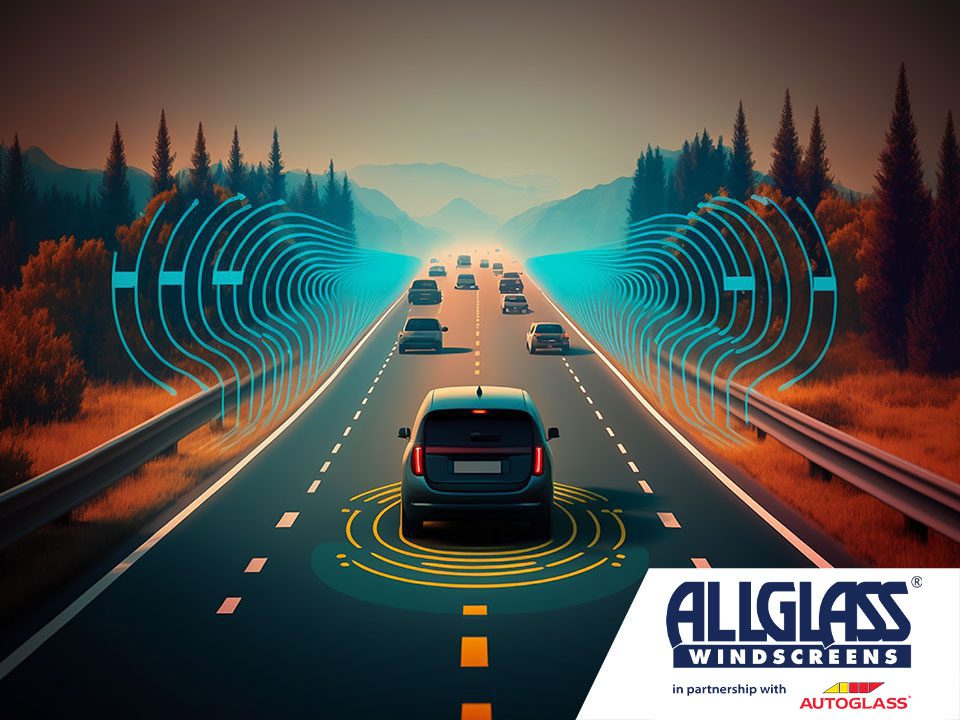
ADAS features that will soon come as standard on all new vehicles
Advanced Driver Assistance Systems, or ADAS for short, have become commonplace over the course of the last 20 years or so. Essentially every car produced since the turn of the millennium has boasted some sort of technological enhancement designed with greater driver safety or comfort in mind.
Unsurprisingly, safety rather than comfort was the driving concern in the recent decision by the European Commission to make certain common ADAS features compulsory in new vehicles. The compulsory ADAS features we can expect to see more of in the future can be divided into two distinct categories: Passive and Active. Passive ADAS safety systems are designed with reducing the consequences of an impact on passengers in mind. Accordingly, they can be considered as part of the more established forms of “passive” safety systems like seat belts and airbags. The difference with “active” safety systems is that they are aimed at reducing the chance of an accident in the first place. Under this heading, we find a variety of ADAS systems, the likes of ABS (anti-lock braking system), TCS (which regulates the power applied to each of your car wheels) and ESP (an electronic system that maintains the stability of the vehicle).
The European Commission’s plan for making it compulsory for all manufacturers to include some of these systems as standard has three distinct phases. In fact, the first phase began in July 2022 and affects all new cars made since that point. Notably, new cars that were previously approved are not obliged to incorporate these ADAS features. Also, it is worth noting that these regulations also do not pertain to used cars that are already on the road.
So, precisely what are the ADAS Systems that the European Commision have deemed mandatory and what exactly do they do?
Push for standardisation of ADAS terms >>
Adaptive cruise control (ACC)
Adaptive Cruise Control adjusts the cruising speed while driving and can consider things like the traffic conditions etc. to ensure that your vehicle maintains a safe distance between yourself and other road users.
Automatic Emergency Braking (AEB)
Automatic Emergency Braking detects the distance between your vehicle and other cars, pedestrians, cyclists etc. and can then brake accordingly. This system greatly reduces the risk of a rear-end or cornering collision by causing the car to stop should the driver neglect to do so.
Driver fatigue detector
This system monitors the driver’s attention and intervenes should it detect a lack of attention being paid to the road or the driver’s surroundings, often utilising audio warnings or issuing specific requests or instructions to the driver.
How does the system detect a lack of focus on the driver’s behalf? The system simply keeps tabs on the driver’s typical behavior pattern from the beginning of the trip and assesses whether they are becoming less precise or more abrupt in their behaviors. If the system then detects that something is amiss, it will emit a visual or sensory alarm, such as vibrating the drivers seat or steering wheel. Additionally, every couple of hours the system will gently indicate to the driver that they should perhaps consider taking a break.
Level 3 Automation is here, but what does that mean? >>
Breathalyser (Alcolock)
This innovative safety system, which is also known as Alcolock, was set to be incorporated from July 6, 2022 in certain European countries. However, for cars the only thing that is mandatory as of July is the pre-installation of the system, so that it can be retrofitted in the future when the system is intended to be ubiquitous. With this system, the driver must blow into a breathalyser before starting the vehicle. If they are determined to be over the legal limit, the vehicle is paralyzed.
Driver Eye Monitoring
Driver eye monitoring systems use infrared light to determine where a driver’s eyes are looking, for how long and even if the eyes are closing and showing signs of fatigue. Some driver eyesight cameras will even monitor pupil size to check for drowsiness.
Drivers who appear distracted will receive an alert with visual warnings on a vehicle’s dashboard or, in some models, an audible warning sound.
Driver Head Movement Monitoring
These systems track the movements of a drivers head to check for signs of distraction, tiredness or lack of attention when changing lanes. Should the system detect that the driver is not paying due attention to what is happening on the road, they will emit a warning sound of some sort and direct the driver to consider taking a break.
Less Common ADAS Features Explained >>
Lane Keeping System
Systems like these warn the driver should their vehicle cross a line and leave their lane without having signaled the intention to do so. Lane keeping systems like these are designed with the intention of alerting the driver to the fact that the vehicle is drifting out of the lane and will get them to react.
Recording devices (EDR)
This ADAS enhancement is similar to the black boxes you expect to find in aeroplanes. The EDR (Event Data Recorder) records all the relevant vehicle information like speed, engine revolutions, steering movements and, if there is a collision, impact force. So that in the event of an accident it is possible to ascertain the cause. Interestingly, the data gathered by EDR devices is anonymous, and not even vehicle licence numbers can be identified.
Tire Pressure Monitoring
Systems that constantly monitor your vehicle’s tire pressure to ensure it never veers below or above a safe level will now be expected to come as standard, in line with the directives from the European Commission.
Common ADAS Features Explained >>
Intelligent Speed Assistance systems
This ADAS feature alerts the driver when they have exceeded the speed limit before autonomously reducing the vehicle’s speed to the legal limit. As soon as the driver accelerates, the system is deactivated, giving the driver full control of the vehicle again. Using Cruise Control, the Intelligent Speed Assistance will continuously adapt and maintain your vehicle’s speed to reflect the legal limit on any given road and the location of other vehicles in relation to your car.
Reversing camera
Modern rear cameras facilitate easy parking and revering. The technology can also be used to warn the driver of obstacles in their path within about a 30-metre radius, like pedestrians or cyclists. If the system detects something, a danger signal will alert the driver as to which side the obstacle is coming and, if the driver doesn’t apply the brake, the car will autonomously do so.
Heavy vehicles
As something of an aside, the European Commission’s new directions also specified a number of ADAS features expected to appear as standard in HGVS and Buses.
Going forward, all HGVs and Buses must include:
- Lane change warning systems.
- Blind spot monitoring systems around the vehicle.
- Autonomous emergency braking systems.
- Pedestrian and cyclist detection devices in the immediate vicinity.
Dynamic vs Static ADAS – what’s the difference? >>
In addition to the general requirements and existing systems (such as lane departure warning and advanced emergency braking), trucks and buses will now be required to be designed in such a way as to reduce blind spots around the vehicle. They will also be expected to come equipped with ADAS capable of detecting pedestrians and cyclists in the immediate vicinity of the vehicle.
Furthermore, and perhaps most interestingly, the new regulation enables the Commission to enact specific rules in the future regarding the the safety of hydrogen-powered vehicles and of automated vehicles. In essence, it allows more space for the Commission to update and make new specifications to take into account any heretofore unseen technological advancements.
It’s a brave new world when it comes to the technology found as standard in modern cars. We hope you found this guide enlightening. Be sure to check back with the Allglass® / Autoglass® blog soon for more tips, explainers and guides like this one.
Book an appointment now
For a quick and easy way to make an appointment book online now.
